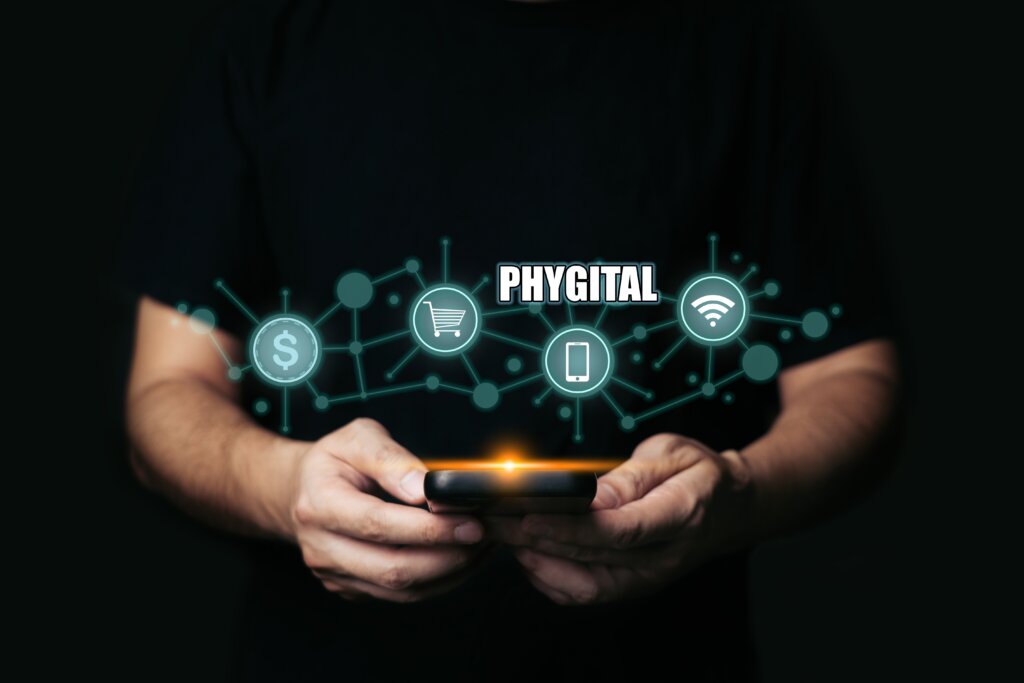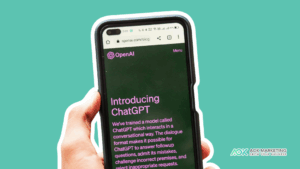Businesses continuously look for novel methods to engage their customers and produce memorable experiences in today’s fast-changing digital market.
Phygital Marketing is one such strategy that has made great headway in recent years. By fusing the greatest physical and digital marketing techniques, phygital marketing seeks to deliver a smooth and immersive consumer experience. The idea of physical marketing, its significance in the digital era, and how it varies from conventional marketing strategies will all be covered in this article.
Additionally, we will look at instances of prosperous companies that have adopted Phygital Marketing and talk about the advantages of applying a Phygital approach in contemporary companies.

What is Phygital Marketing?
Phygital Marketing, an innovative marketing approach, masterfully fuses the physical and digital realms to carve out a unique and interactive user journey. This cohesive strategy paves the way for businesses to connect with their customers at several touchpoints, equipping them with an enriched experience that leaves a lasting impact.
This integrated strategy enables a more tailored and interesting experience, which may eventually boost consumer happiness and brand loyalty.
Businesses must adapt and improve their marketing tactics to remain competitive as customers use digital tools to research, compare, and buy goods and services. Phygital Marketing enables firms to develop a more comprehensive and cogent brand experience that appeals to today’s tech-savvy customers by successfully fusing the physical and digital worlds.
How is Phygital Marketing Different from Traditional Marketing Techniques?
Traditional marketing techniques often rely on one-way communication and mass advertising, with limited opportunities for personalization and interaction.
In contrast, Phygital Marketing focuses on creating engaging and immersive experiences that encourage two-way communication and foster a deeper connection between the brand and its customers. This is achieved through digital technologies such as augmented reality, virtual reality, mobile apps, and social media platforms integrated with offline marketing efforts like in-store displays, events, and print materials.
For example, a retail store might use an interactive kiosk that allows customers to try on clothing items. Alternatively, a restaurant could offer a mobile app that lets patrons view menu items in 3D before placing their order.
These Phygital experiences not only enhance the customer’s interaction with the brand but also provide valuable data that can be used to inform future marketing strategies and improve the overall customer experience.
Examples of Successful Phygital Marketing
Several businesses across various industries have successfully implemented Phygital Marketing strategies to promote their brands and create memorable customer experiences. Some notable examples include:
Nike: The sports apparel giant has embraced Phygital Marketing through its Nike Live concept stores, which combine digital technologies with in-store experiences. Customers can use the Nike app to reserve products, access personalized product recommendations, and even unlock rewards through an in-store digital vending machine.
Sephora: The beauty retailer has incorporated Phygital Marketing by introducing its Virtual Artist app, which allows customers to try on makeup products using augmented reality virtually. Sephora’s in-store Beauty TIP (Teach, Inspire, Play) Workshops also provide customers with hands-on tutorials and access to digital tools for personalized product recommendations.
Amazon Go: Amazon’s cashier-less convenience stores showcase the potential of Phygital Marketing in the retail sector. By combining digital technologies like computer vision and machine learning with physical store elements, Amazon Go provides a seamless shopping experience that eliminates the need for traditional checkout lines.
Benefits of Implementing a Phygital Strategy
Incorporating a Phygital Marketing strategy can provide numerous benefits for modern-day businesses, including:
Enhanced customer experience: By integrating digital technologies with physical touchpoints, businesses can create more engaging and immersive customer experiences.
Improved data collection and analysis: Phygital Marketing allows businesses to gather valuable data on customer behavior, preferences, and interactions, which can inform future marketing strategies and improve the overall customer experience.
Increased brand engagement: By offering unique and interactive experiences, businesses can foster a deeper connection between their brand and customers, increasing loyalty and advocacy.
Components of a Successful Phygital Strategy
Companies must constantly innovate and adapt to stay ahead in today’s competitive business landscape. One such approach that has gained significant traction in recent years is Phygital Marketing, combining the best physical and digital marketing strategies to create a seamless and immersive customer experience.
1. Developing a Phygital Mindset
The first step in creating a successful Phygital strategy is to develop a Phygital mindset within your business. This involves embracing the idea that online and offline experiences should not be treated as separate entities but as interconnected components of a holistic customer journey. To foster this mindset:
-Encourage collaboration between your digital and physical marketing teams, ensuring they work together towards a unified goal.
-Educate your team on the importance of Phygital Marketing and its potential benefits for your business.
-Set clear objectives and KPIs for your Phygital strategy, focusing on customer engagement, satisfaction, and loyalty.
2. Leveraging Technology and Innovation
To stay ahead in the Phygital game, businesses must leverage technology and innovation to create unique and engaging customer experiences. Some tips for incorporating technology into your Phygital strategy include:
-Explore emerging technologies like augmented reality (AR), virtual reality (VR), and artificial intelligence (AI) to enhance your marketing efforts.
-Develop mobile apps or responsive websites that offer personalized content and seamless integration with your physical touchpoints.
-Utilize customer data collected from digital and physical interactions to inform your marketing decisions and improve the overall customer experience.
3. Creating Engaging and Interactive Content
Engaging and interactive content is at the heart of a successful Phygital strategy. To create compelling content that resonates with your target audience:
-Develop a content marketing plan encompassing online and offline channels, ensuring consistency in messaging and branding.
-Use storytelling to create emotional connections with your audience and showcase your brand’s unique value proposition.
-Incorporate interactive elements such as quizzes, polls, and gamification to encourage customer participation and engagement.
4. Building Strong Online and Offline Connections
A key aspect of Phygital Marketing is the seamless integration of online and offline touchpoints. To create a cohesive customer experience:
-Ensure your physical locations (e.g., stores, showrooms, events) offer digital elements like free Wi-Fi, interactive displays, or mobile app integrations.
-Implement omnichannel marketing strategies, allowing customers to interact with your brand through multiple channels (e.g., social media, email, in-store).
-Offer consistent customer support across all touchpoints, ensuring a smooth transition between online and offline interactions.
5. Monitoring and Adapting to Industry Trends
To remain relevant and competitive in the market, businesses must continuously monitor and adapt to emerging industry trends. You can maintain a strong market position and capitalize on new opportunities by staying abreast of new developments and adjusting your Phygital strategy accordingly. To achieve this:
-Regularly conduct market research and competitor analysis to identify new trends and technologies in your industry.
-Attend industry conferences and events to network with peers and gain insights into best practices for Phygital Marketing.
-Foster a culture of innovation within your organization, encouraging employees to share ideas and experiment with new approaches.
Final Thoughts
As technology continues to evolve and consumer expectations shift, the future of Phygital Marketing looks promising. Businesses that embrace this integrated approach will be better positioned to create memorable customer experiences, foster brand loyalty, and drive growth in an increasingly digital world.
As emerging technologies such as 5G, IoT, and advanced AI become more prevalent, the possibilities for innovative Phygital experiences will only expand, further blurring the lines between the physical and digital realms.
Now is the time for businesses to take the first step towards Phygital transformation. Begin by assessing your current marketing efforts, identifying opportunities for Phygital integration, and fostering a culture of innovation within your organization.
By taking a proactive approach to Phygital Marketing, you can unlock new opportunities for growth and remain at the forefront of your industry, ensuring a prosperous future in the ever-evolving digital landscape.
About The Author
Rehj
With over 15 years of experience in copywriting, Rehj has established a reputation as a highly skilled and talented wordsmith. Rehj has honed their craft throughout her career, consistently producing top-quality content for various audiences and industries.
Her ability to understand their target audience, craft compelling narratives, and write in a style that resonates with their audience has made them a sought-after copywriter in their field. Rehj’s passion for writing and commitment to producing top-notch content has driven their success and established them as a trusted voice in copywriting.





